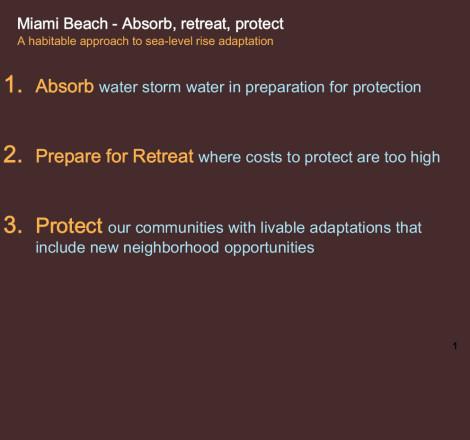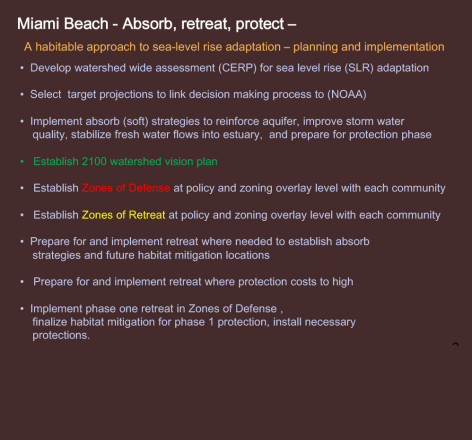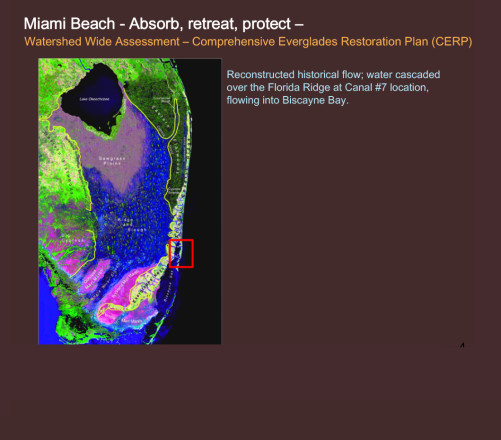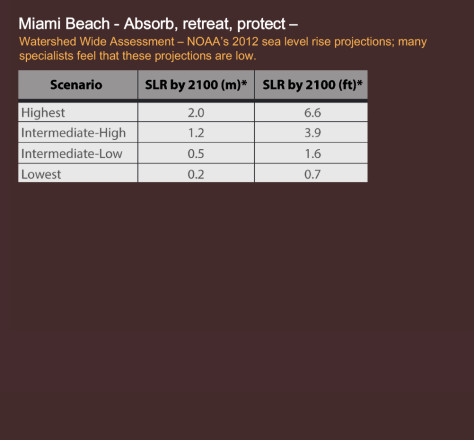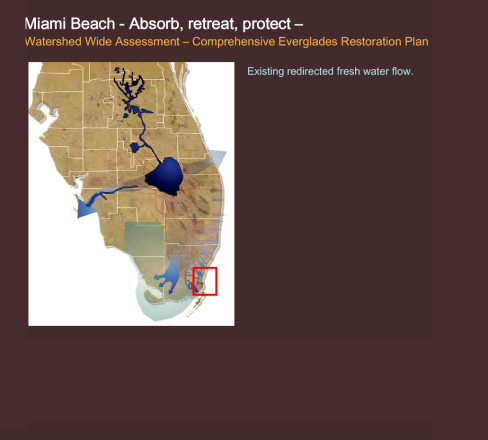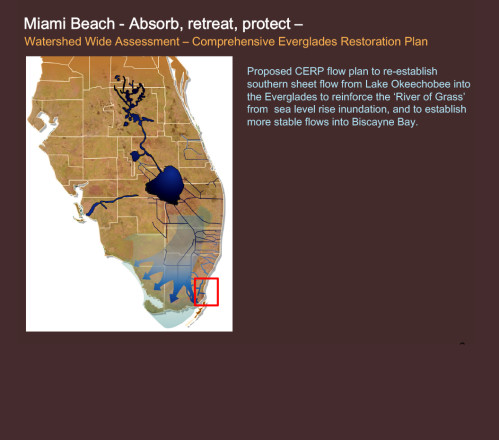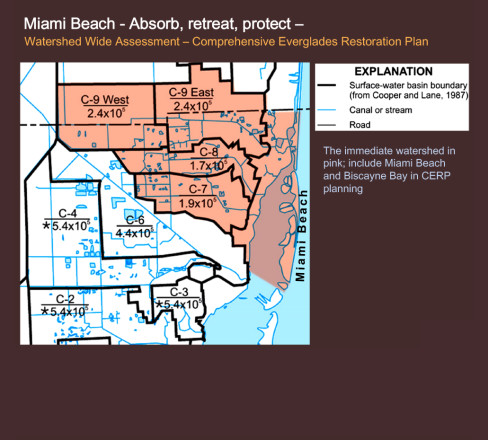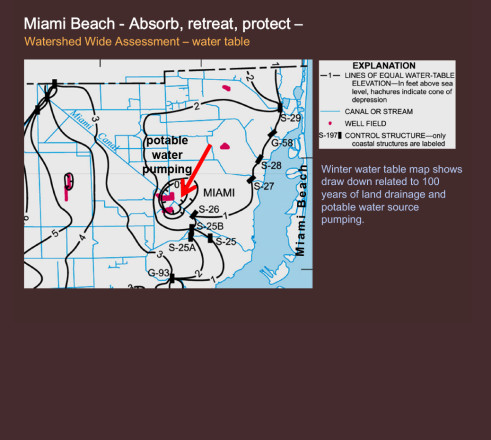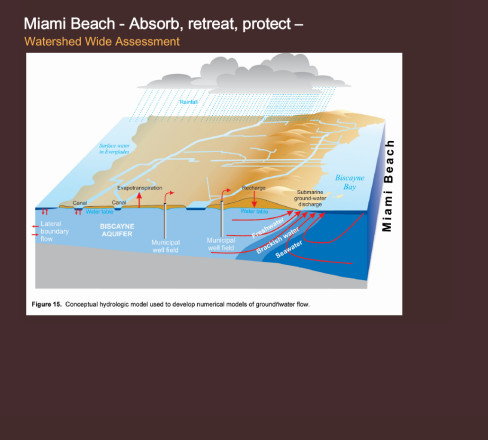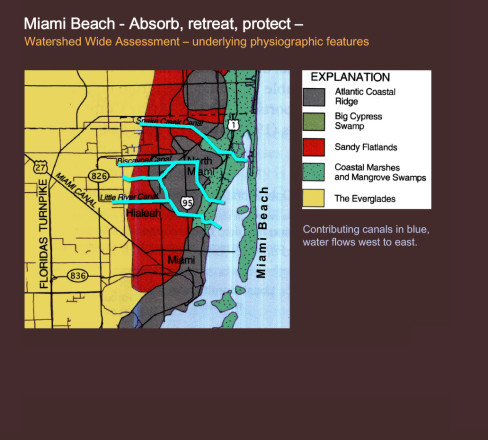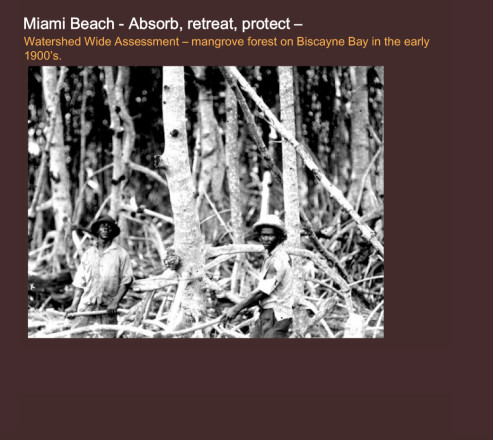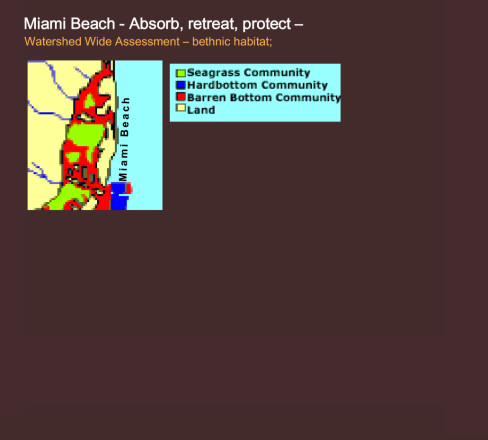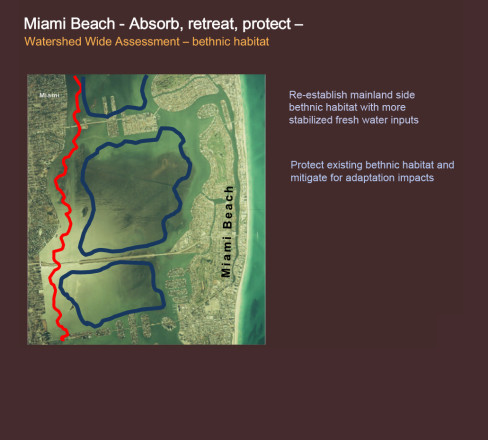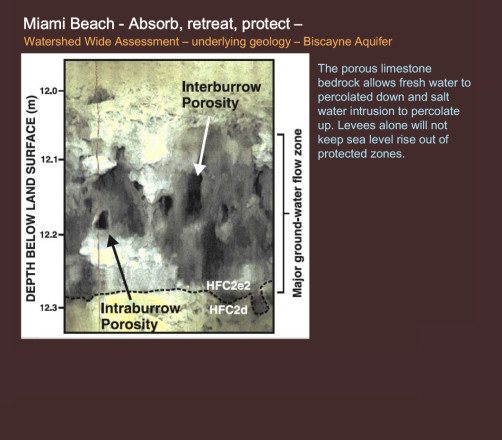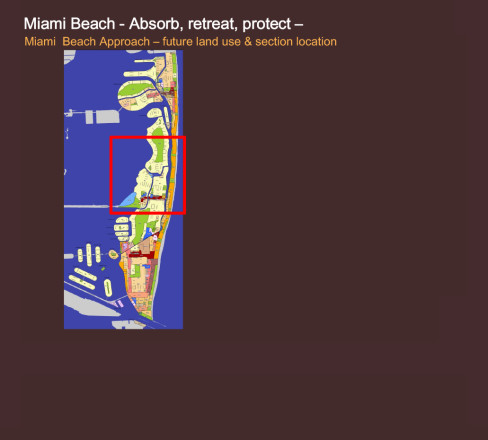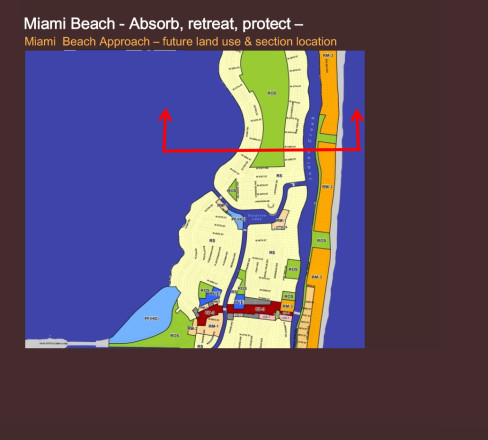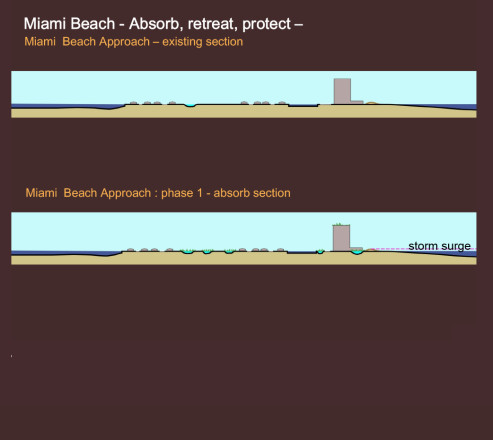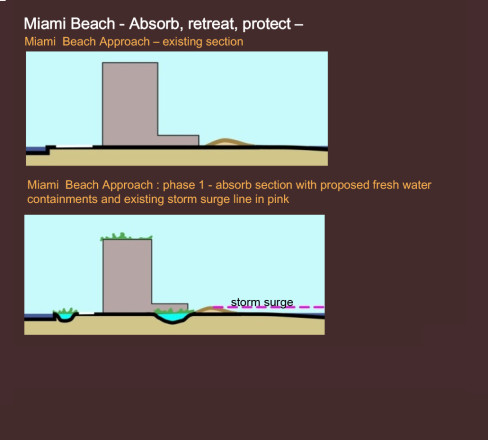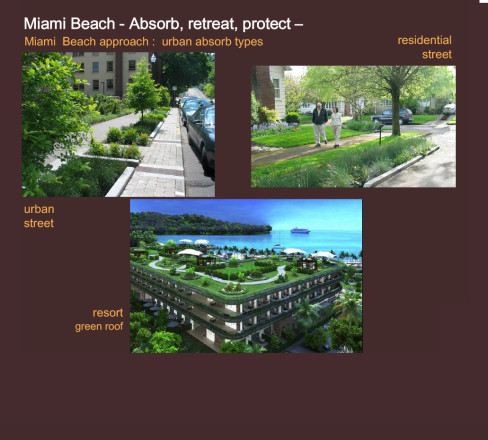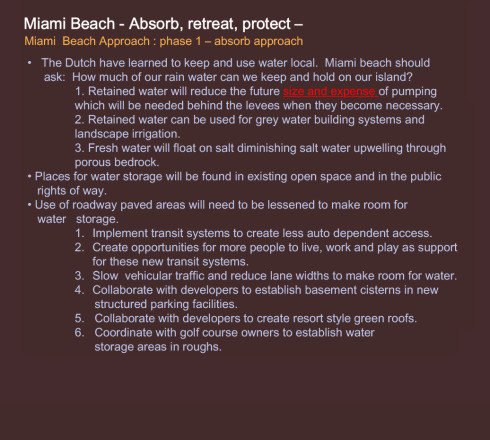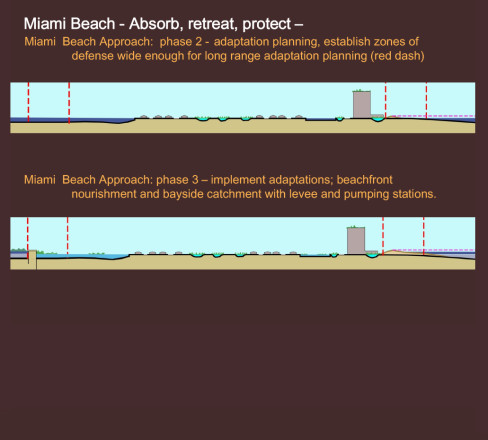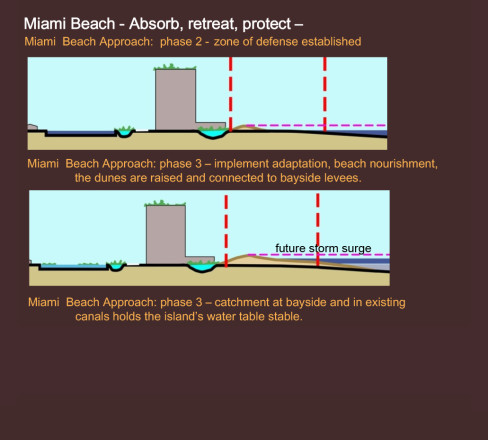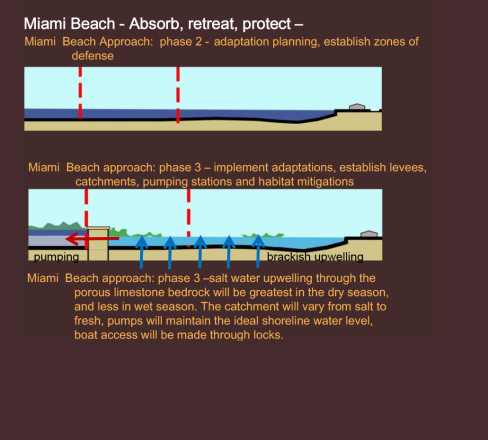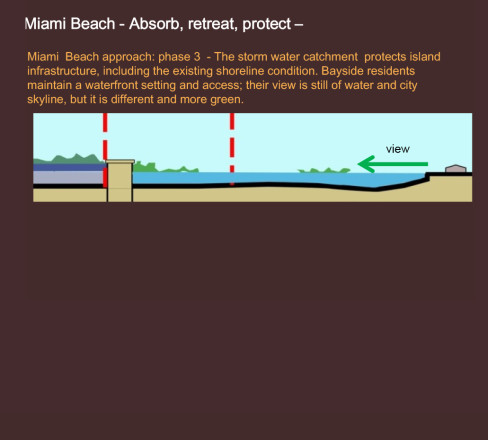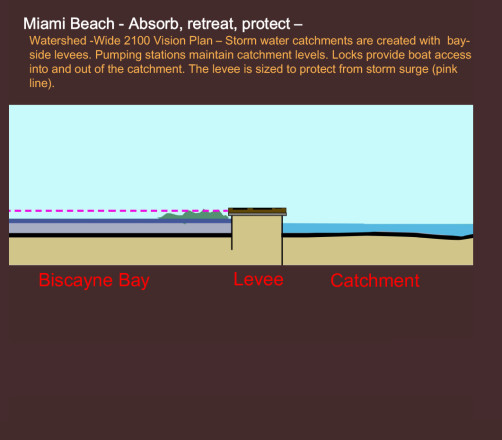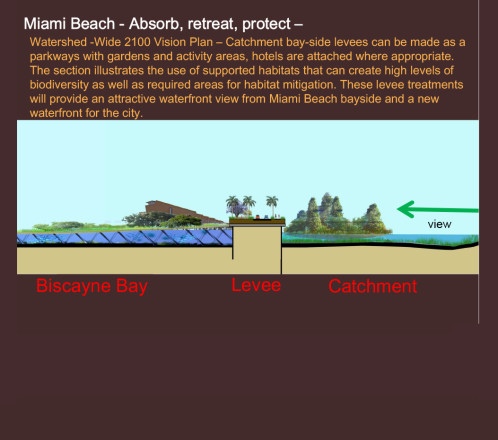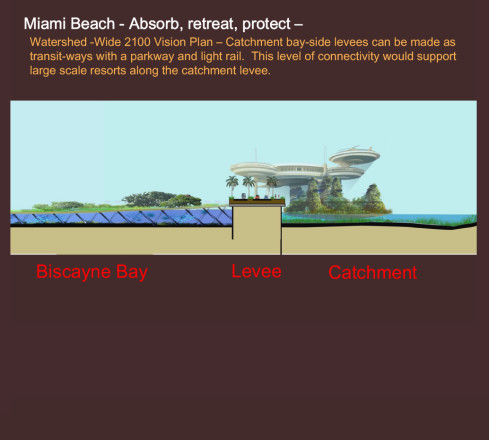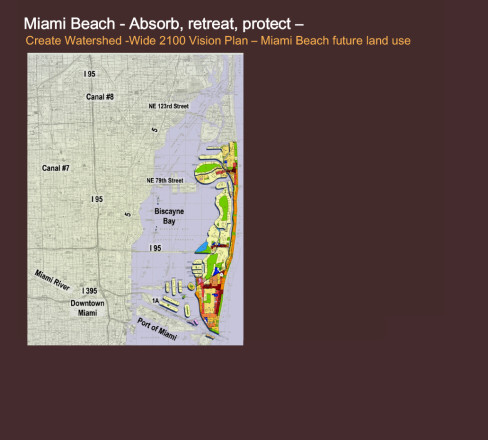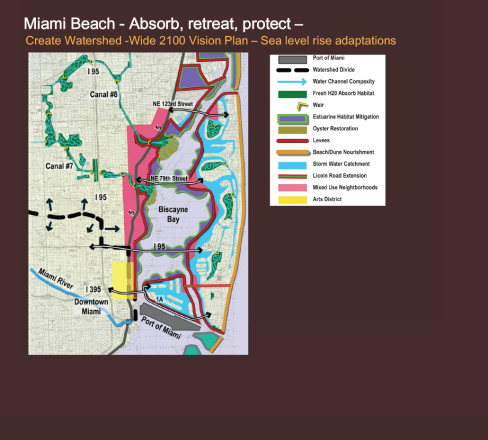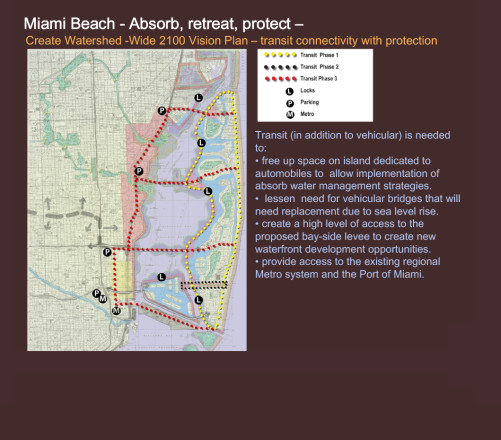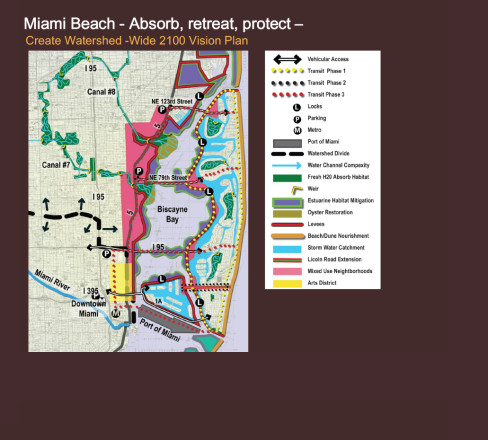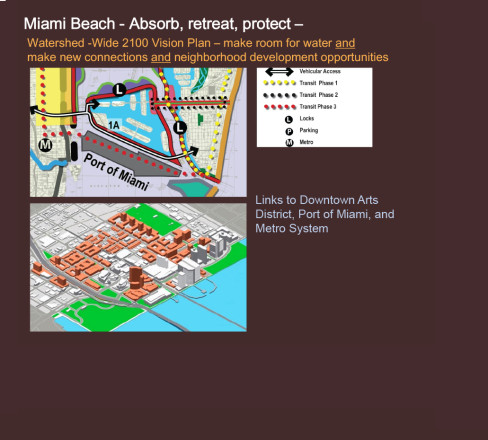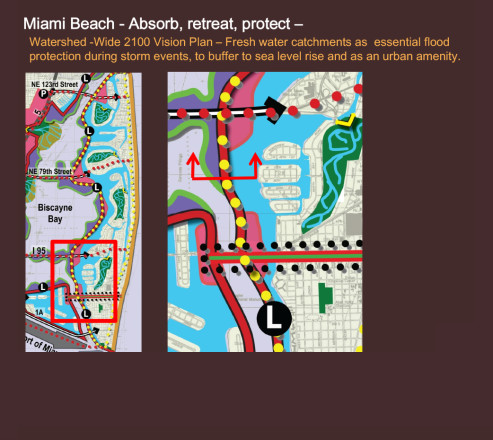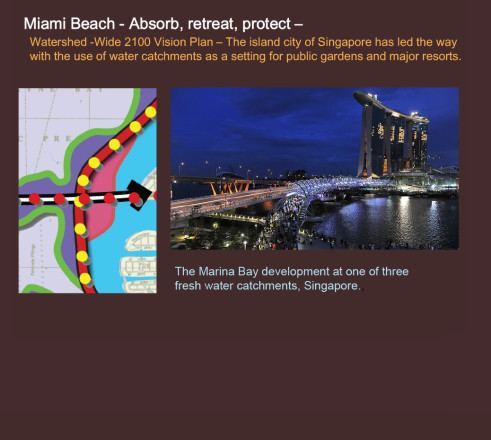Miami Beach Sea Level Rise Adaptation
Miami Beach Sea Level Rise Adaptation
(use scroll bar on right side of this window to read description)
LOCATION: Miami Beach, Florida
CLIENT: Florida International University Department of Architecture
Florida International University Department of Architecture invited Ed Hamm to be a part of their first Miami Beach Sea Level Rise Conference. Miami is undergoing increased seasonal flooding due to rising tide levels and associated storm surges. With no where to go, brackish salt water moves up into the streets and into the lower levels of some buildings through the existing storm water drainage system and the porous coral stone sub-base.
Ed presented an approach to protect the beach community and Biscayne Bay with his “Habitable Adaptations” strategy. In his strategy, the community can be saved through the age-old application of a creative series of dikes, levees and catchments. Rising water is captured, absorbed, stored and then slowly pumped back out to sea. The strategy investigated potential long-term locations for water to be stored when the proposed sea level rises. Bayside landfills too costly to protect will become sources of sand needed to build new ocean front dune barriers. New estuarine habitats will be constructed and supported in the deepening water. Dikes and levees need to be carefully planned to provide an important open space system, enable critical transit links and create settings for new development, replacing highly threatened areas. These human made structures can also become platforms for the creation of new protective natural habitats as well as locations for new forms of dwelling and commerce as “Habitable Adaptations” to sea level rise. This is a crucial issue for Miami Beach. Florida International University Department of Architecture has fostered extensive research and raised visibility about the severe threats of storm surges and rising sea levels in coastal communities across the south eastern states of America.
